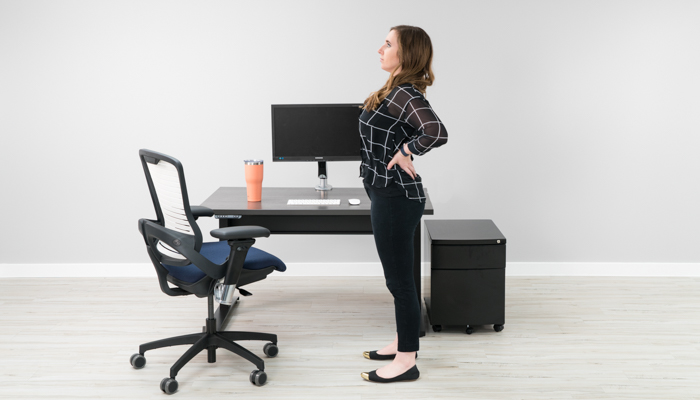Prolonged hours of sitting can lead to aches, pains, and poor posture, affecting your overall well-being.
But fear not—we’ve compiled a list of the top-10 stretches and exercises to help you manage discomfort and enhance your posture, right at your desk.
These simple-yet-effective movements can be seamlessly integrated into your daily routine, providing much-needed relief and revitalization. Say goodbye to the strains of a sedentary workday and hello to a more relaxed, energized, and posture-perfect you!
Let’s dive into the top-10 stretches and exercises that will transform your desk experience.
- Neck Tilt Stretch
- Sit up straight and slowly tilt your head to one side, bringing your ear toward your shoulder.
- Hold for 15 to 30 seconds on each side.
- Chin Tucks
- Sit or stand with your shoulders relaxed.
- Gently tuck your chin in toward your neck.
- Hold for a few seconds and repeat several times.
- Shoulder Blade Squeeze
- Sit or stand with your arms by your sides.
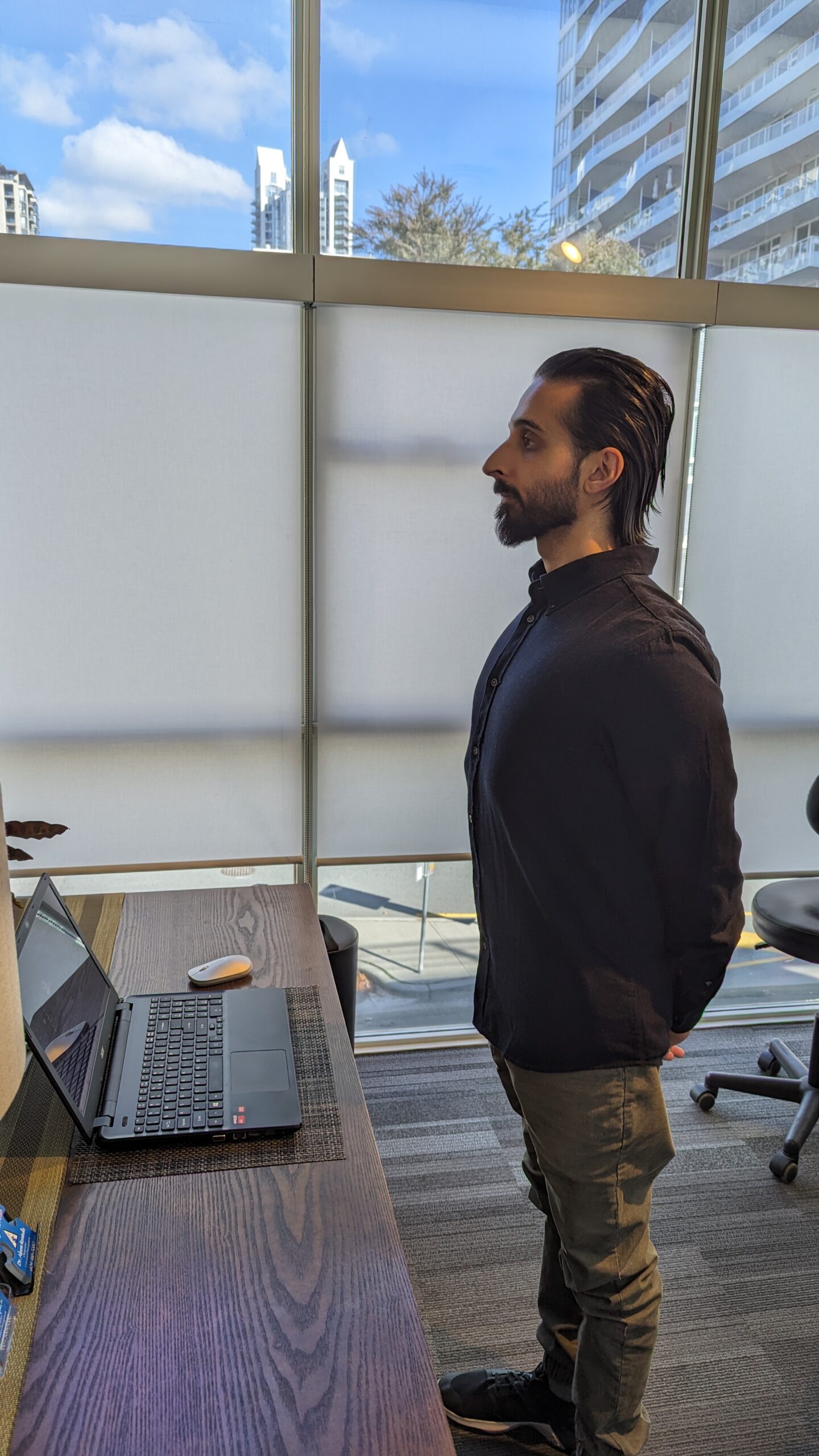
- Squeeze your shoulder blades together as if you’re trying to hold a pencil between them.
- Hold for a few seconds and release.
- Sit or stand with your arms by your sides.
- Chest-Opener Stretch
- Clasp your hands behind your back and gently straighten your arms.
- Lift your chest and squeeze your shoulder blades together.
- Hold for 15 to 30 seconds.
- General Upper Back and Chest Stretch
- While looking forward place your hands behind your head.
- Gently push your head backwards into your hands.
- Slightly look skyward and stick your chest out to deepen the stretch to your liking.
- Hold for 15 to 30 seconds on each side
- Seated Spinal Twist
- Sit up straight and cross one leg over the other.
- Gently twist your torso in the direction of the crossed leg.
- Hold for 15 to 30 seconds on each side.
- Hip Flexor Stretch
- Start in a standing position; move your affected leg one pace backward.
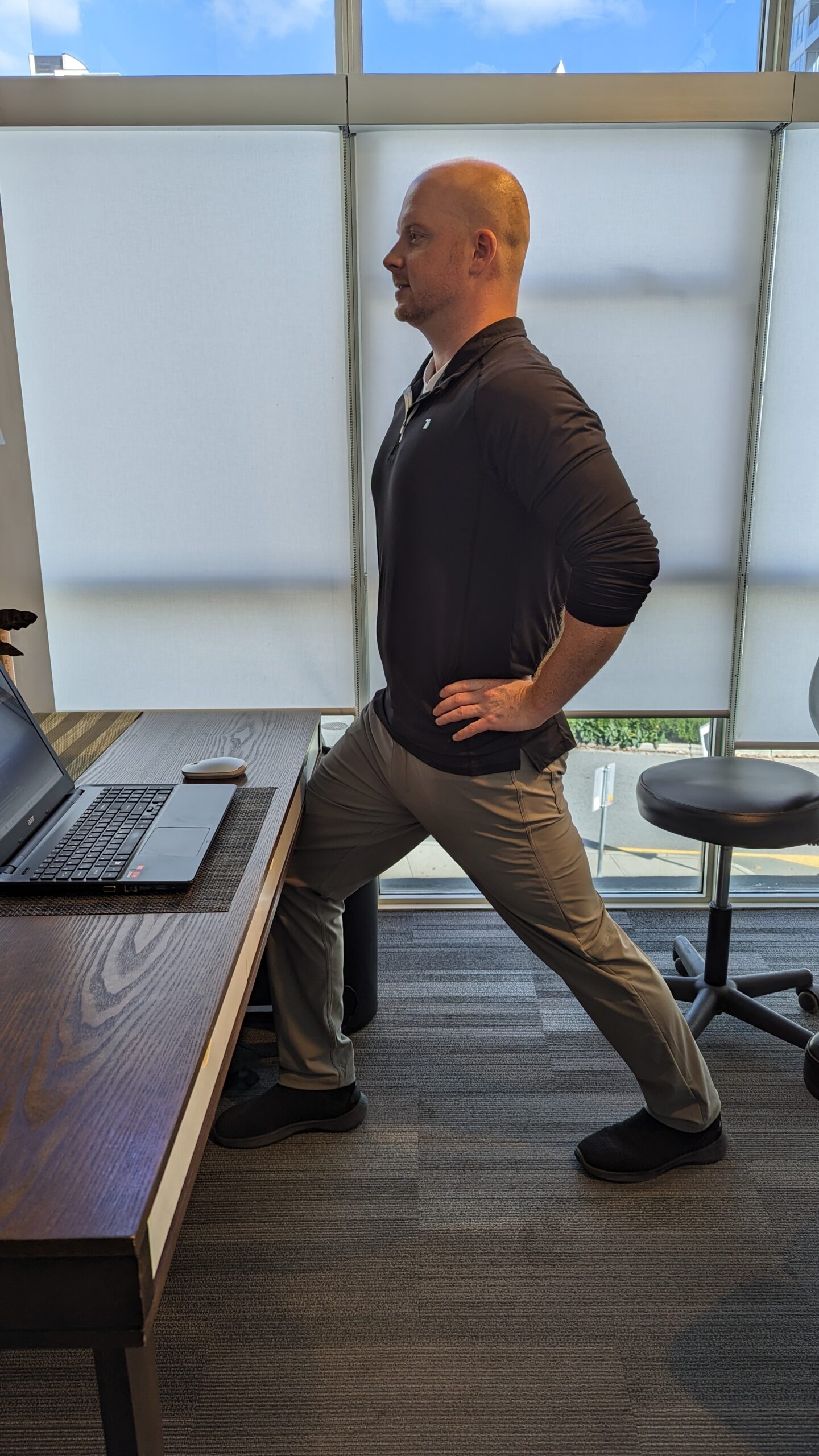
- Keeping your feet in that position, drive your hips forward and lift up your chest.
- Hold for 15 to 30 seconds on each side.
- Start in a standing position; move your affected leg one pace backward.
- Seated Leg Raises
- Sit up straight with your feet flat on the floor.
- Lift one leg as high as you comfortably can.
- Hold for a few seconds and repeat with the other leg.
- Glute Squeezes
- Sit on the edge of your chair with your feet flat on the floor.
- Squeeze your glutes (buttocks) together and hold for a few seconds.
- Release and repeat several times.
- Standing Desk Stretches
- Perform standing stretches such as calf raises, leg swings, or simple forward bends to break up the sitting routine.
Remember to incorporate the stretches and exercises into your daily work routine to manage aches and pains and improve your posture. Taking short breaks to move and stretch throughout the day is key to maintaining a healthy and comfortable seated-position posture at your desk.
Dr. Chris LaRocque, BSc, DC, and Dr. Aleem Remtulla, BSc, DC,
Foundation for Integrated Health, Lonsdale Quay, North Vancouver. www.foundationforintegratedhealth.com


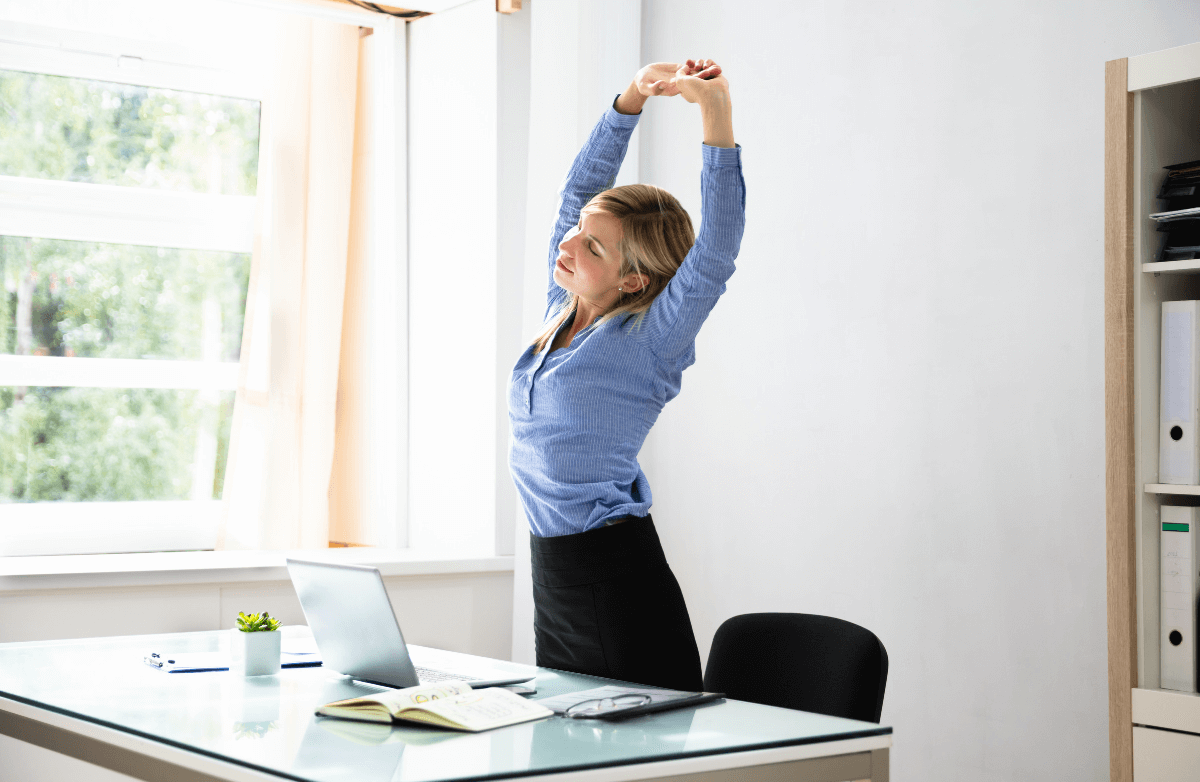
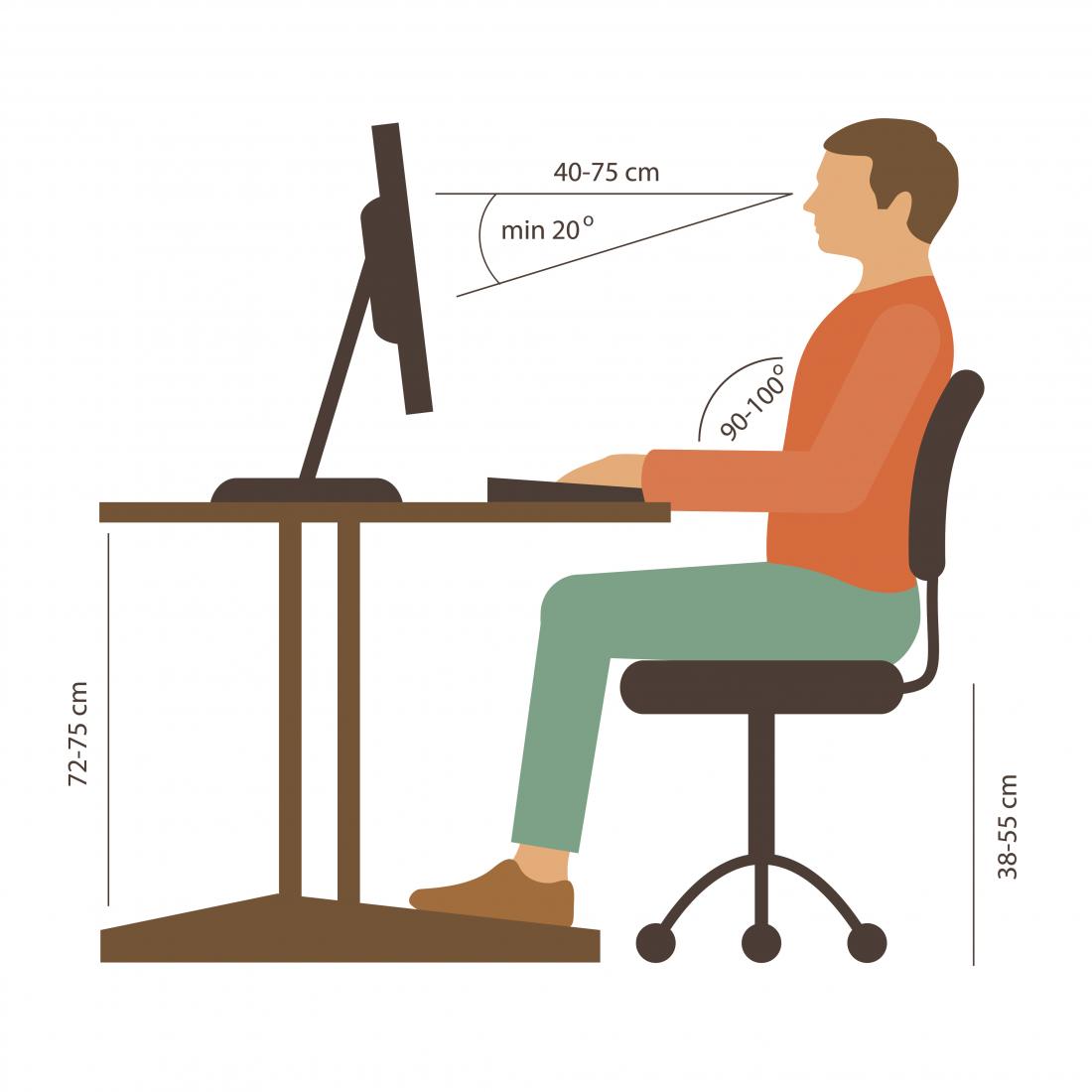
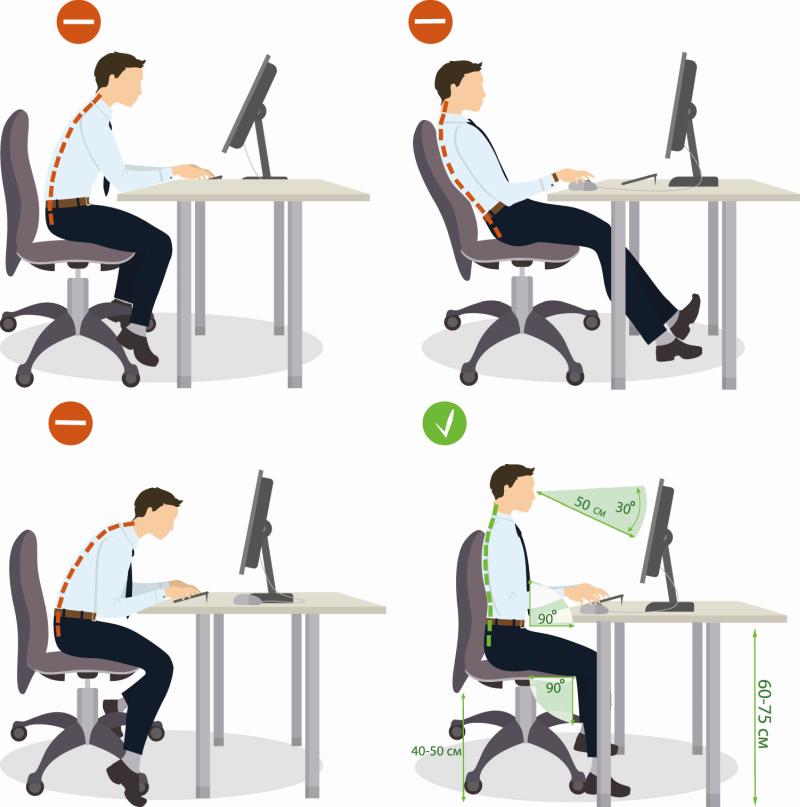
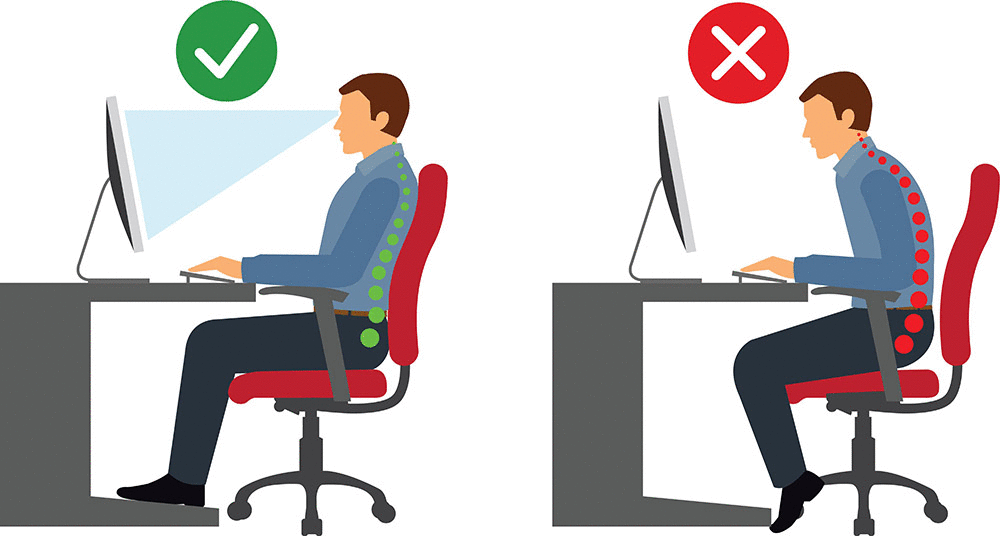 and not be cut off midway through your thighs. If you’re shorter, then the seat length should also be a bit shorter so that you can sit comfortable at the back rest and not have the chair seat go past the back of your knees.
and not be cut off midway through your thighs. If you’re shorter, then the seat length should also be a bit shorter so that you can sit comfortable at the back rest and not have the chair seat go past the back of your knees.